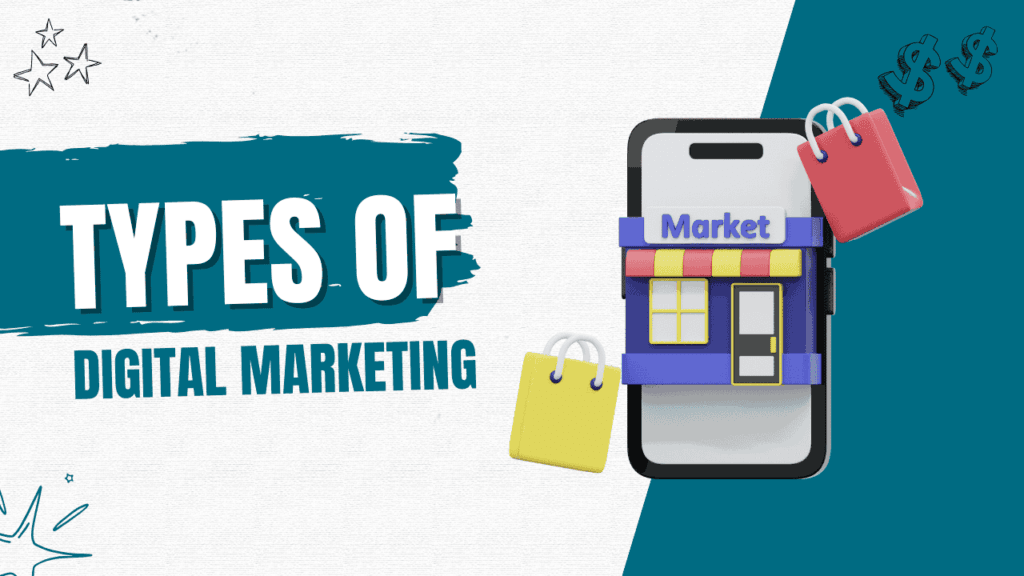Digital marketing is the art and science of promoting products, services, and brands using digital platforms, channels, and technologies. It involves leveraging the internet and electronic devices to reach a wider audience, connect with customers, and drive meaningful engagement. In today’s digital-first world, understanding the fundamentals and evolution of digital marketing is vital for businesses aiming to thrive in a competitive landscape.
History and Evolution of Digital Marketing:

Digital marketing has come a long way since its inception. Here’s an overview of its transformation over the decades:
The Early Days
- 1990s: The rise of the internet marked the beginning of digital marketing. Businesses started creating websites to establish their online presence, making websites the first digital marketing tools.
- Email Marketing: One of the earliest and most effective forms of digital marketing, email campaigns became a popular way to share promotions and engage with potential customers.
The Rise of Search Engines
- Late 1990s to Early 2000s:
- Search engines like Yahoo and Google revolutionized how people accessed information.
- Search Engine Optimization (SEO) emerged as a critical strategy for businesses striving to rank higher in search results.
- Pay-Per-Click (PPC) Advertising: Google AdWords (now Google Ads) introduced PPC campaigns, allowing businesses to bid for ad placements on search results pages.
The Social Media Boom
- Mid-2000s: Social media platforms such as Facebook, Twitter, and LinkedIn gained popularity, transforming how businesses interacted with customers.
- Social Media Marketing enabled brands to engage with their audience in real-time and build loyal communities.
- Content Marketing: Focus shifted toward creating valuable content, including blogs, videos, and infographics, to educate and retain audiences.
Mobile and Video Marketing
- 2010s: The rapid adoption of smartphones led to the emergence of mobile marketing strategies, such as SMS campaigns and mobile-friendly websites.
- Video Marketing became essential with platforms like YouTube dominating the digital space.
Current Trends
- 2020s: Digital marketing today is highly personalized and data-driven. Technologies like artificial intelligence (AI) and marketing automation tools enable brands to deliver targeted campaigns. Trends such as influencer marketing, voice search optimization, and interactive content are shaping the future of digital marketing.
9 Different Types of Digital Marketing:

To understand digital marketing comprehensively, it’s essential to explore its various types. Each type serves a unique purpose in engaging and converting audiences.
1. Search Engine Optimization (SEO)
- Definition: The process of optimizing a website to improve its rankings on search engine results pages (SERPs) and increase organic traffic.
- Key Techniques:
- Conducting keyword research.
- Optimizing on-page elements such as meta tags and headers.
- Building high-quality backlinks.
- Creating SEO-friendly content.
2. Pay-Per-Click (PPC) Advertising
- Definition: A model of internet marketing where advertisers pay a fee each time someone clicks on their ad.
- Popular Platforms:
- Google Ads
- Bing Ads
- Social media platforms like Facebook and Instagram.
- Benefits:
- Instant visibility.
- Targeted audience reach.
3. Content Marketing
- Definition: Creating and sharing valuable, relevant, and engaging content to attract and retain a target audience.
- Common Formats:
- Blog posts
- Videos
- Infographics
- Ebooks
- Goals:
- Establish thought leadership.
- Build trust and loyalty with audiences.
4. Social Media Marketing
- Definition: Using social media platforms to promote products, build brand awareness, and engage with audiences.
- Top Platforms:
- TikTok
- Advantages:
- Real-time interaction.
- Wide audience reach.
5. Email Marketing
- Definition: Sending targeted and personalized messages to a list of subscribers to nurture leads and encourage conversions.
- Strategies:
- Sending newsletters.
- Creating automated email sequences.
- Offering exclusive deals and promotions.
6. Affiliate Marketing
- Definition: A performance-based strategy where businesses reward affiliates for driving traffic or sales through their marketing efforts.
- Methods:
- Blog posts.
- Social media campaigns.
- Email promotions.
- Benefits:
- Low-risk and cost-effective.
- Wide reach through affiliates.
7. Influencer Marketing
- Definition: Collaborating with influencers—individuals with a significant following—to promote products or services.
- Why It Works:
- Authentic content resonates with audiences.
- Expands reach and credibility.
8. Mobile Marketing
- Definition: Strategies designed to reach audiences on their mobile devices, such as smartphones and tablets.
- Tactics:
- SMS campaigns
- Mobile apps
- Mobile-optimized websites
- Importance:
- With mobile traffic dominating the digital landscape, this is a must-have strategy.
9. Video Marketing
- Definition: Using video content to educate, entertain, or promote products and services.
- Popular Platforms:
- YouTube
- Vimeo
- Social media platforms.
- Why It’s Effective:
- Videos are engaging and highly shareable.
- Great for storytelling and brand building.
Final Thoughts
Digital marketing has evolved significantly since its early days in the 1990s. Today, it encompasses a wide range of strategies and platforms designed to connect businesses with their audiences in innovative ways. By understanding the history, types, and current trends of digital marketing, businesses can create impactful campaigns that achieve their goals.
Whether it’s through SEO, content marketing, or the latest AI-driven tools, leveraging digital marketing is essential for staying competitive in the modern marketplace. Start exploring these strategies today to build a strong online presence and drive meaningful results for your business.


